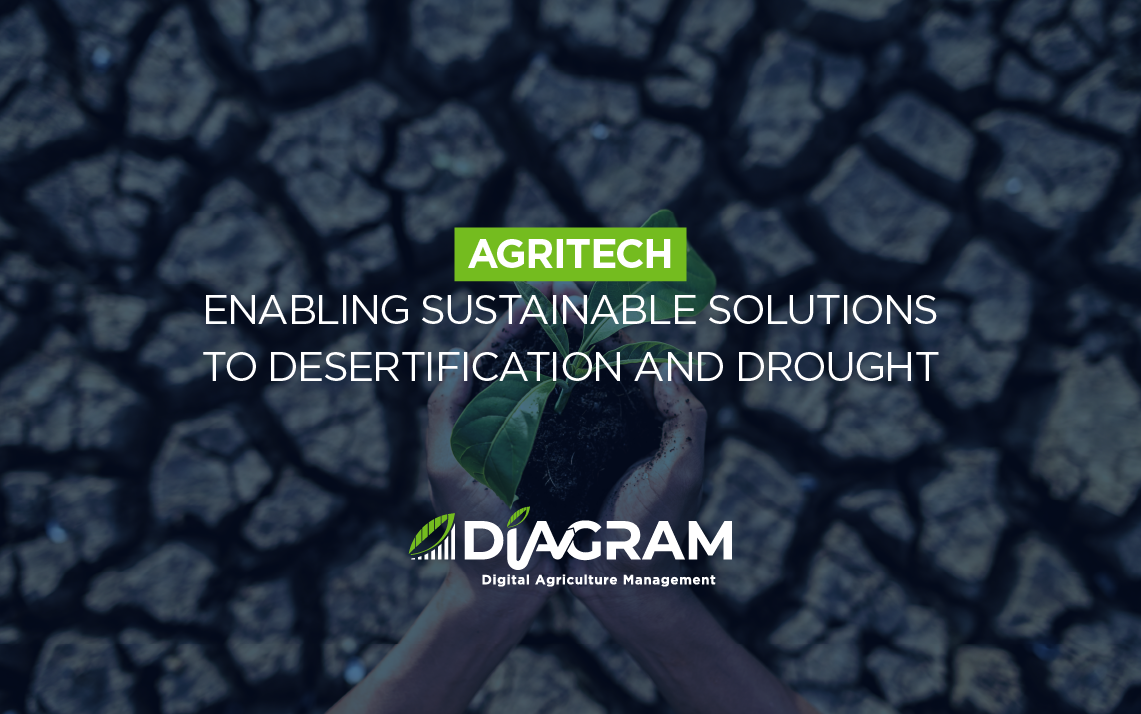
Agritech enabling sustainable solutions to desertification and drought
- Roberto Mancini, CEO of Diagram Group: “Desertification and drought are not isolated events, but closely interconnected phenomena amplified by the effects of climate change, already having a tangible impact on millions of people around the world.”
- On this World Day dedicated to fighting Desertification and Drought, it is essential to shine a light on one of the most urgent environmental emergencies of our time. Agritech technologies represent a strategic lever to combat these phenomena, helping to build a more resilient and sustainable agricultural future.”
- Every second, the world loses the equivalent of four football fields of healthy soil—about 100 million hectares each year. 40% of the Earth’s land surface is already considered degraded. In Italy, the situation is particularly critical: in Sardinia, over 52% of the territory is at risk of desertification, with 11% already significantly affected.
Jolanda di Savoia, June 17, 2025 – Increasingly vast areas of the planet are facing land degradation, desertification, and water scarcity, or even full-blown drought. As much as 40% of the world’s land area is already considered degraded. Desertification causes the annual loss of fertile land equivalent to the size of Egypt, nearly 24 billion tons of fertile soil, and 15 billion trees. Around 1.5 billion people depend on land at risk of desertification, and drought affects 55 million people each year, a figure that could rise to three-quarters of the global population by 2050. This degradation accelerates biodiversity loss, increases the risk of forced migration, and creates global economic and social instability. Healthy soil not only provides nearly 95% of our food, but also offers jobs and livelihoods and protects the Earth from worsening droughts, floods, and wildfires.
“That’s why today, on this World Day dedicated to fighting Desertification and Drought, it is vital to focus on one of the most pressing environmental challenges of our time—where agritech technologies emerge as a solution to reverse course and build a more resilient future,” emphasizes Roberto Mancini, CEO of Diagram Group, the leading agritech hub in Italy and Europe, specialized in precision agriculture services, technological solutions, and professional software applications for the agricultural sector.
In Italy, data shows the situation is particularly alarming in Sardinia, where 52% of the land is at risk of desertification and 11% is already significantly impacted. Other vulnerable regions include Basilicata, Calabria, Campania, Molise, Puglia, and Sicily. The phenomenon is worsened by rising temperatures, declining rainfall, and the intensification of extreme weather events such as droughts and heatwaves.
Nationwide, soil consumption continues to increase: in 2022 alone, about 77 km² of natural surfaces were lost—equivalent to 2.4 square meters per second.
Desertification brings severe environmental consequences, including biodiversity loss, decreased soil fertility, and reduced carbon sequestration capacity, with direct impacts on the country’s food, water, and economic security.
“Desertification and drought,” continues Mancini, “are not isolated events but are interconnected and worsened by climate change. Millions of people are already affected by soil fertility loss, decreased agricultural productivity, and growing food insecurity. The consequences extend well beyond rural communities, affecting national economies, social stability, and in some cases, driving forced migration.”
The role of agritech. Agritech the blend of agronomic practices and digital transformation, plays a transformative role through advanced sensors, artificial intelligence, robotics, and precision farming—all innovations that are redefining how we grow crops, manage water resources, and protect ecosystems.
Smart agriculture and water management. “Field sensors and multispectral cameras, even those mounted on drones,” says Mancini, “enable precise monitoring of crop health and soil moisture levels. These data, analyzed by AI algorithms, allow farmers to apply water and nutrients precisely where and when needed, drastically reducing waste. Intelligent irrigation systems that automatically adjust to weather conditions and crop needs are a key element for sustainable and responsible water resource management.”
Research is key to drought-resistant crops. Research and development in biotechnology are opening new frontiers in selecting more resilient crop varieties. “Thanks to genetic improvement,” the CEO of Diagram emphasizes, “we can now obtain varieties that are more resistant to drought and capable of thriving on degraded soils. This approach not only boosts productivity in marginal areas but also helps reduce pressure on more fragile ecosystems.”
In this context, the use of satellite systems and advanced data analytics platforms—such as those developed by Diagram—enables real-time monitoring of soil conditions and drought levels on a large scale. Early warnings provided by these tools allow farmers and institutions to take preventive actions, significantly reducing the impact of extreme events. Supporting this, advanced robotics can automate agricultural tasks like seeding, harvesting, and weeding with great precision, minimizing soil compaction and optimizing resource use.
Diagram
Diagram was born in 2024 from the transformation of the IBF Servizi SpA Group and the acquisitions of Agronica Srl, Abaco SpA, Agriconsulting SpA and Netsens Srl. It is an Italian and European leader in the digitalisation of services dedicated to the agri-food sector, in the development of farm management software and in the management of delivery processes, monitoring and control of environmental and agricultural support programmes. A partner of important governments on the European continent, it supports public administration, agricultural companies, banking and insurance institutions and the agri-food industry with the aim of promoting social, economic and environmental sustainability. Today the company is 41.6% owned by CDP Equity (Cassa Depositi e Prestiti Group), 41.6% by Trilantic Europe and 15% by BF Agricola.
